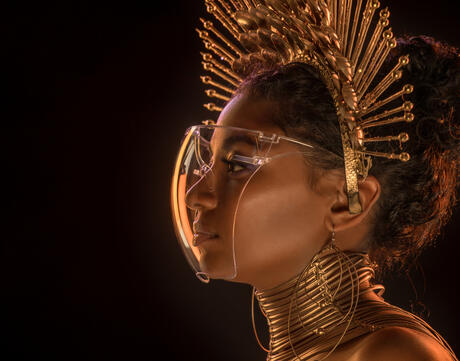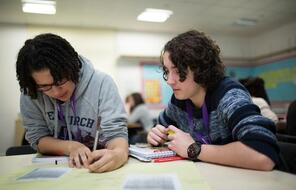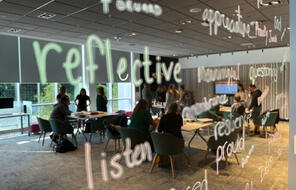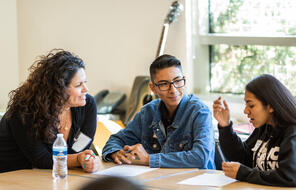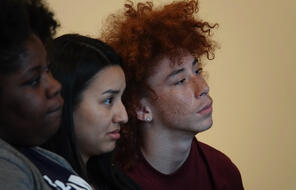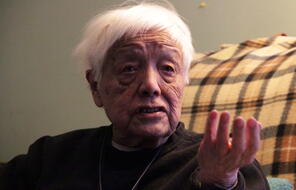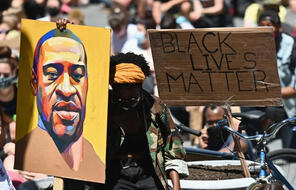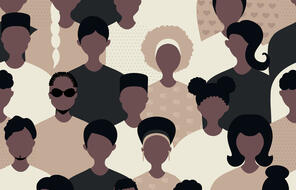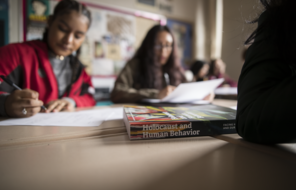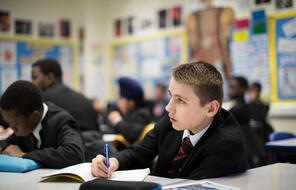Bettina Love put the concept of “Black joy” on the map in the education space with her groundbreaking book We Want to Do More Than Survive: Abolitionist Teaching and the Pursuit of Educational Freedom. In it, she argues that students must not only learn about the suffering and oppression faced by Black people, but also about the resilience, creativity, and humanity of this community. There are many ways to incorporate Black joy into one’s teaching, and one approach that educators can consider is the rich world of afrofuturism.
From the comic book and film franchise Black Panther to the writings of Octavia Butler, Tomi Adeyemi, and Nettrice Gaskins, Afrofuturism is an artistic movement that has been gaining in popularity over recent decades. Irrespective of medium, afrofuturist art blends elements of science fiction and fantasy with Black history and contemporary culture to reimagine past, present, and future. Afrofuturist thinker dream hampton explains: “All social justice work is science fiction. We are imagining a world free of injustice, a world that doesn’t yet exist.” Amid the increasing popularity of afrofuturist art and ideas, educational leaders are taking note.
Below are two rich curricular resources from our peers in the education space who are helping teachers bring afrofuturist themes into their middle and high school classrooms:
Black Panther in the Classroom
Harvard Graduate School of Education (HGSE) is among the educational institutions helping teachers and students explore afrofuturism. In their resource Black Panther in the Classroom, they’re doing so through the lens of the 2018 Marvel film by the same name. The primary setting of the film Black Panther is the fictional nation of Wakanda—a thriving, majestic African nation that employs supremely advanced technology to both conceal and protect its distinctive cultural and natural resources from the rest of the world. As a result, Wakanda appears to outsiders as a poor, desolate place even as it houses a vast panoply of riches within. In the words of Janine de Novais, a lecturer on education at HGSE, “Black Panther...is a story about what would have happened if Africa (symbolized by ‘Wakanda’) had been allowed to retain its resources and develop on its own terms, free of slavery and colonialism.” In HGSE’s resource, a large and diverse cadre of faculty propose strategies for engaging the film in the classroom, framing it as an opportunity for cross-media literacy and a film that can provoke discussion on current events.
The alternative history that this film presents ought to raise rich questions for students of all backgrounds, yet its depiction of Africa and Afro-descended peoples has elicited a notable wave of Black joy. Black Panther represents Africa as it has never been represented in film before, and did so in a world where African Americans face many barriers to cultivating a positive sense of cultural heritage rooted in the African continent. This speaks to a longstanding debate in the field of Black Studies about African Americans’ access to an enduring sense of African culture amid the multigenerational trauma begun in slavery. For all of the debate that Black Panther has now generated amongst Black scholars, the film seems to have opened a kind of portal into a joyful space that lies outside of this multigenerational trauma—one in which Black viewers have a chance to connect with a renewed sense of Africa that they can carry inside themselves.
GET TO THE FUTURE: Bettina Love’s Afrofuturist Classroom Resource
Bettina Love has also incorporated Black Panther and other afrofuturist materials into her work. Love’s GET FREE is a multimedia hip hop civics curriculum for youth and young adults designed to introduce students to “a national network of young community leaders, artists, and activists who advocate for social change and democratic inclusion driven by grassroots organizing.” GET FREE includes “GET TO THE FUTURE”, a free-form resource collection in which Love highlights a wide array of afrofuturist resources with which students and educators can explore and shape discussion. These resources include graphic novels like Ta-Nehisi Coates’ Black Panther and Octavia Butler’s Kindred, along with a wide array of artistic works including the music of Janelle Monae. Love also features a number of the writings of literary luminary Octavia Butler and the writings of those who have come after her including Ytasha L. Womack, Nnedi Okorafor, and adrienne maree brown.
--
Regardless of the particular teaching strategies and tools that individual educators use to honor Black joy, the afrofuturist framework can help students encounter the past with fresh questions and envision futures that represent a radical departure from our current social reality. Whether that’s a future in which African technologies and cosmologies are seen and valued, or even just one in which Black lives really do matter, afrofuturism provides critical and artistic resources that are helping teachers, students, and others imagine otherwise.
--
View our on-demand webinar on Engaging in Antiracism Work: During Black History Month and Beyond.
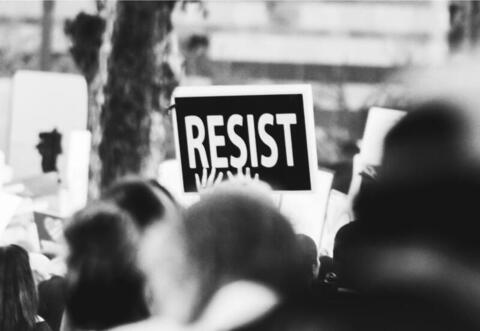
Resistance and Black History
Explore our Black History Month resource collection to bring this curriculum to your classroom year-round.

